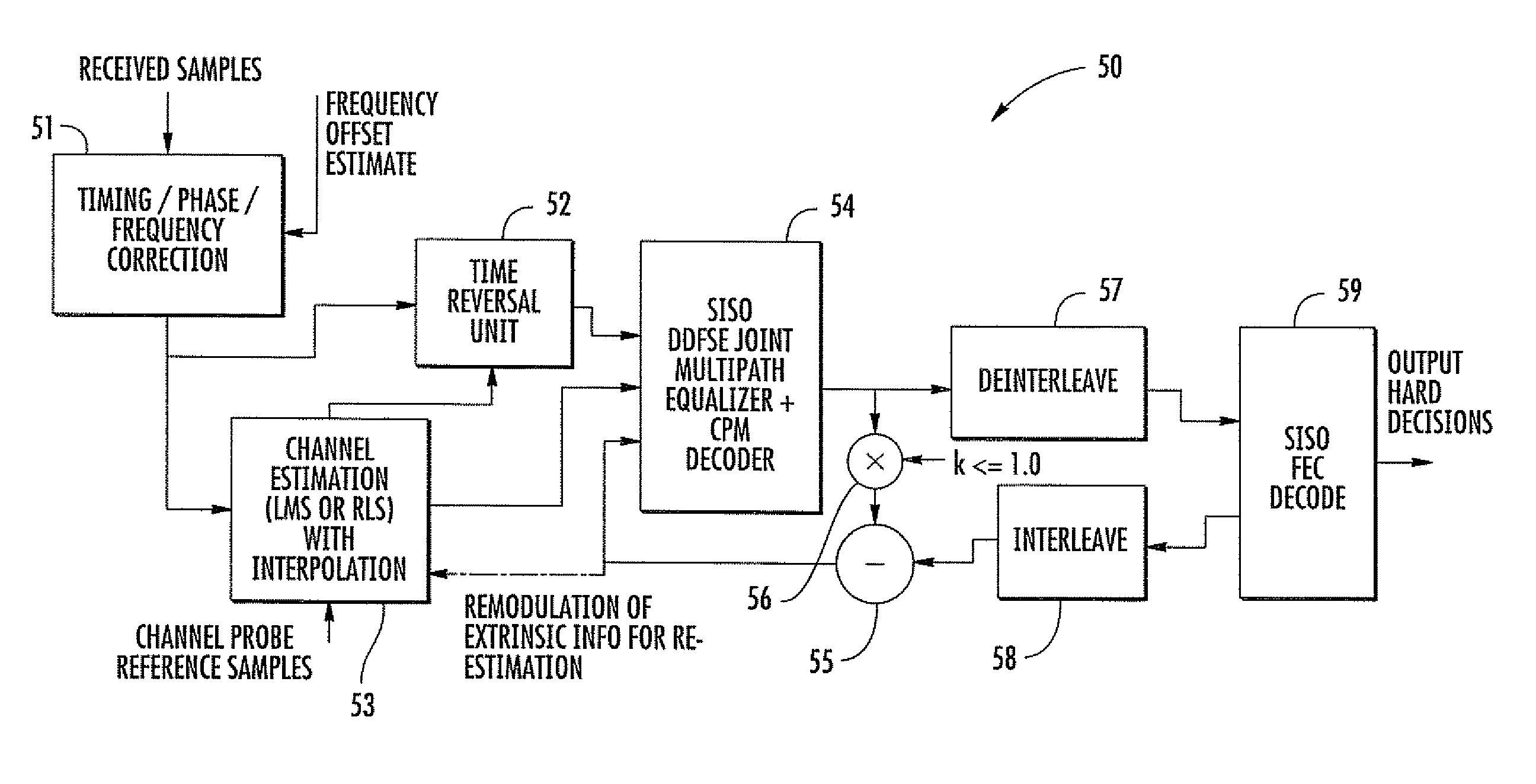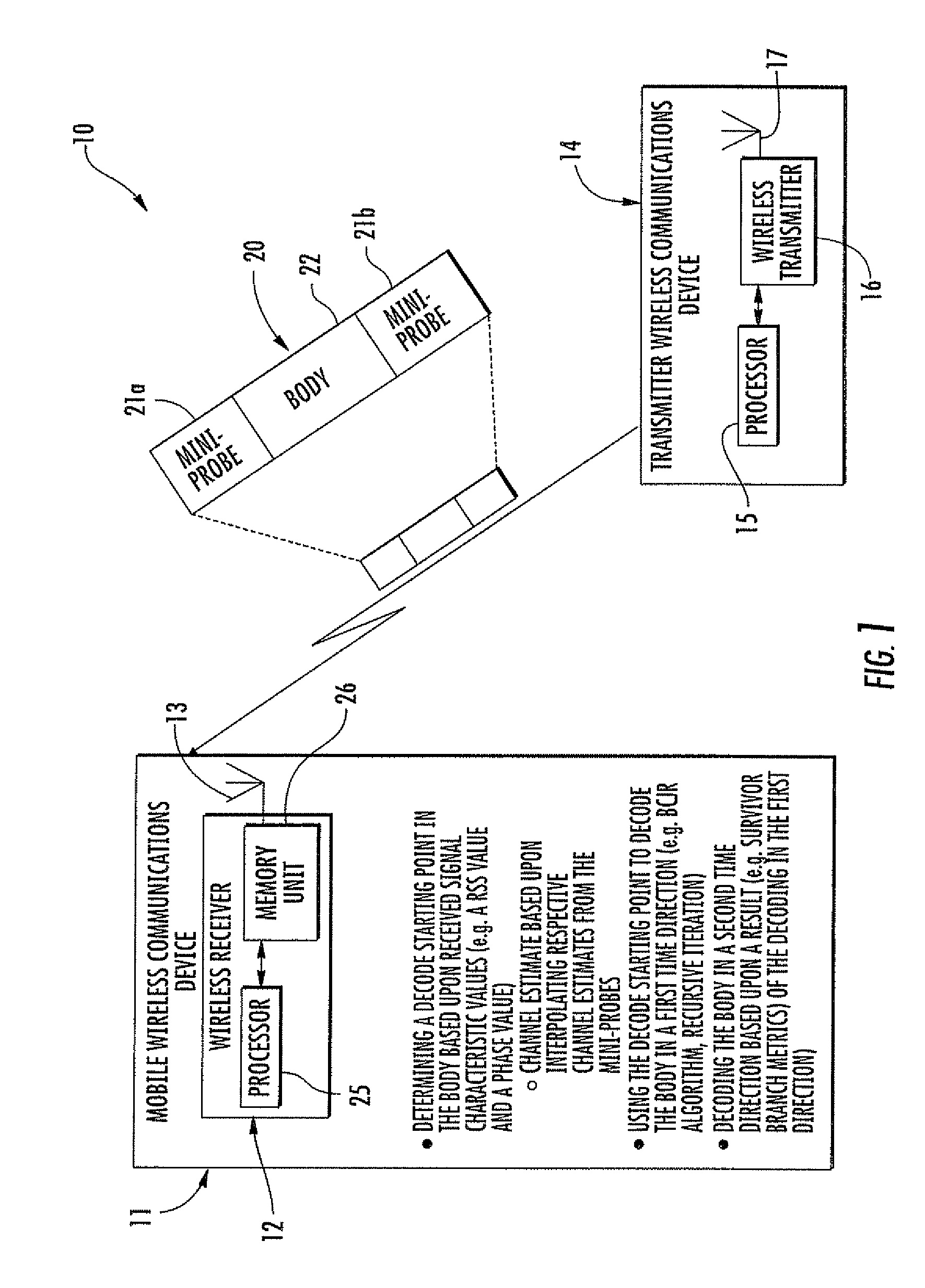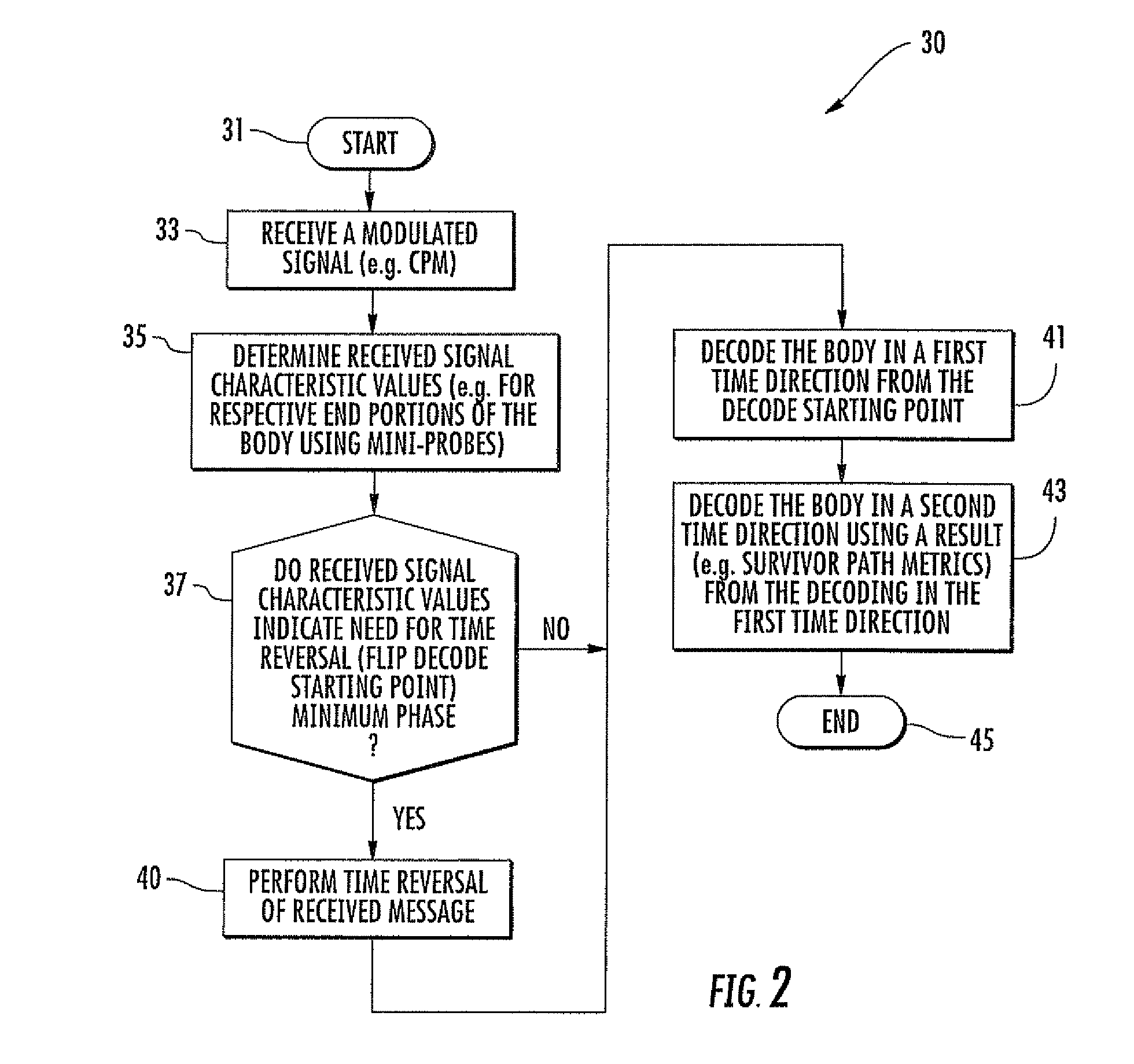Mobile wireless communications device and receiver with demodulation and related methods
a mobile wireless communication and receiver technology, applied in the field of mobile wireless communications devices, can solve the problems of increasing the complexity of the device, difficult practical implementation in a mobile communications device, and the complexity of the inner mlse soft-input soft-output algorithm, so as to achieve efficient demodulation and avoid significant computational resources.
- Summary
- Abstract
- Description
- Claims
- Application Information
AI Technical Summary
Benefits of technology
Problems solved by technology
Method used
Image
Examples
Embodiment Construction
[0019]The present invention will now be described more fully hereinafter with reference to the accompanying drawings, in which preferred embodiments of the invention are shown. This invention may, however, be embodied in many different forms and should not be construed as limited to the embodiments set forth herein. Rather, these embodiments are provided so that this disclosure will be thorough and complete, and will fully convey the scope of the invention to those skilled in the art. Like numbers refer to like elements throughout, and prime notation is used to indicate similar elements in alternative embodiments.
[0020]Referring initially to FIGS. 1-2, a wireless communication system 10 according to the present invention is now described. The wireless communications system 10 illustratively includes a receiver wireless communications device 11, and a transmitter wireless communications device 14 communicating therewith. Furthermore, a flowchart 30 illustrates a method of operation o...
PUM
 Login to View More
Login to View More Abstract
Description
Claims
Application Information
 Login to View More
Login to View More - R&D
- Intellectual Property
- Life Sciences
- Materials
- Tech Scout
- Unparalleled Data Quality
- Higher Quality Content
- 60% Fewer Hallucinations
Browse by: Latest US Patents, China's latest patents, Technical Efficacy Thesaurus, Application Domain, Technology Topic, Popular Technical Reports.
© 2025 PatSnap. All rights reserved.Legal|Privacy policy|Modern Slavery Act Transparency Statement|Sitemap|About US| Contact US: help@patsnap.com



